Few understand the power they have in their hands. There are times when your own hands can save or literally betray, and all this happens without your conscious participation. Of course, if you do not know how the hand language works.
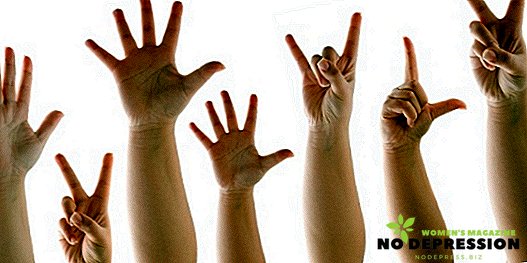
A person who speaks the language of non-verbal communication has a lot of advantages over his counterpart, and is able to hear not only what the interlocutor says, but also to understand what he is thinking about, or about what he does not speak. But let's get everything in order.
A few stories about the appearance of hand gestures
Today, many of the characters demonstrated by hands, have an international registration, and are equally understandable for the New Zealand Maori and African Masai. Why did this happen?
Why do the military apply a hand to the head to greet, or to praise a person, we raise our thumb up, and to insult - the middle one? Answers to these questions came to us from the past. Let us examine the history of the occurrence of some of these gestures in more detail.
- Thumb up. Shows that all is well and you are well done. This movement came to us from antiquity. The Roman public, during gladiatorial battles, in this way signaled that for the zeal and diligence shown by the defeated slave during the battle, he could save his life. Lowering the thumb did not bode well for the loser. Since that time, it’s gone: the thumb points to the sky - you are up to the ground, to the ground - you are a little loser;
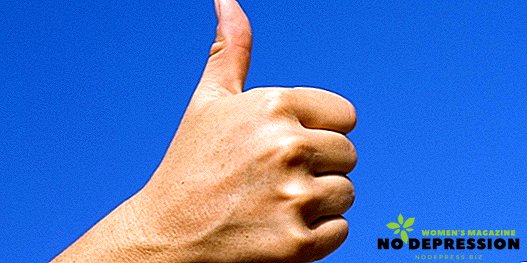
- The greeting of the military when addressing the commander or when raising the flag, by offering an open palm to the head, was borrowed from the medieval knights. In those old times, to show the purity of their thoughts, the warriors, at a meeting, raised their visors, thereby demonstrating the friendliness of their plans. Another version of the emergence of this sign is associated with earlier periods of human history. In ancient times, they filed in order to show that only the sun was above their ruler, when they met with the autocrat they covered their eyes with their hands, thereby demonstrating their submission. Over time, the shape of the gesture changed slightly, but the content remained unchanged. People in uniform show their respect and commitment to the authorities or the state symbol by raising their hands to their heads;
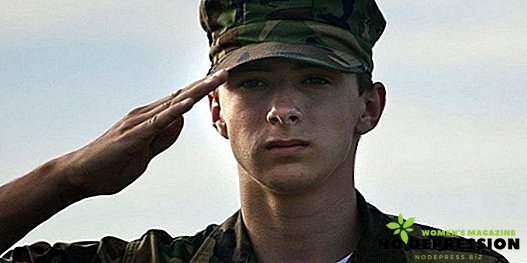
- Hand extended at a meeting, or a handshake. The appearance of this greeting is explained quite simply. In ancient times, an outstretched hand, without arms, symbolized your peace plans and respect;
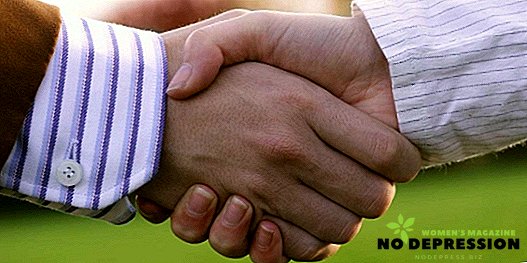
- Raised up the middle finger. There are at least two explanations for the appearance of this obscene gesture. According to one of the versions, the ancient Greeks showed this symbol to those with whom they would like to carry out actions, the meaning of which reflects what we mean, showing this gesture today. Another option goes back to the beginning of the 15th century, when during the French-English battle at Azinkour, French soldiers cut off the middle fingers of a captured English archer so that they could not shoot at them accurately. Naturally, those of the English, who were not able to catch the mean French, from a safe distance showed them their middle fingers, thereby showing their neglect and courage. Why didn't the French just kill the captives? The question remains open;

- The so-called goat. The symbol that distinguishes the true "metalworkers" from the people around them. In one embodiment, it says that the sign originated in the environment of the ancient Vikings, and symbolized the Scandinavian rune, protecting its owner from the evil eye. According to another version, this is a "flaring" of Soviet prisoners, who, in order not to go to work, simply cut their tendons, and the hand took this form spontaneously. Today, this symbol of coolness says that a person who demonstrates it, a principled "lawyer", and popcorn scattered in a movie theater, he will not collect;
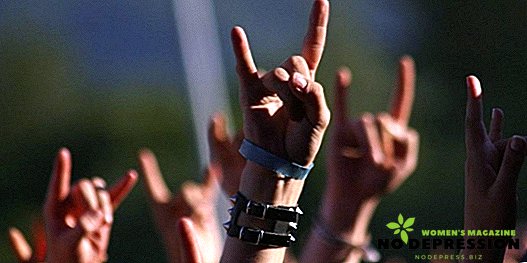
- Everyone is well-known American OK. In this gesture, there may be discrepancies depending on the part of the world in which you are located. In some nations, it symbolizes that your business is in perfect order, in others it means that you are a "complete zero", and in some people it demonstrates problems with the large intestine. According to one of the most plausible versions, this sign was borrowed from the non-verbal language of the native American inhabitants, the Indians, who thus showed their fellow tribesmen no problems.
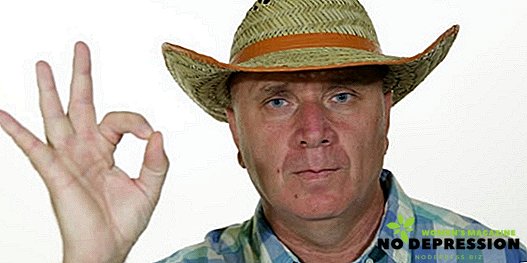
Some hand gestures and their meaning
Each gesture has its own interesting and multifaceted history, however, it's time to talk about their meaning and practical use of this knowledge in everyday life.
Open hand
In most cultures, an open hand is associated with honesty. Therefore, if you want to make people believe that you are telling the truth, it is not recommended to present your arguments with your hands in fists.
At such times, it is better to open your palms to show that you are not hiding anything.
On the other hand, be vigilant when someone tells you important things by putting their hands in their pockets or hiding them behind their backs. Hidden palms do not make phrases more believable, even if they are correct. With high probability, it can be argued that your interlocutor lies or hides some important information from you.
Palm position up and down
The way you use your hands while communicating with others can greatly affect their perceptions to your words and yourself. Ask a simple question with your palms up, and people will think that you are asking for a favor.

On the one hand, they will not be disturbed by your request, but on the other they will not feel threatened or pressured by you. If you ask this question with the palms pointing down, it will more likely resemble a mandatory requirement.
Handshake
It can not only set the tone for any business or political meeting, but also influence its results. When two peers shake hands, their palms remain upright.
While speaking, your interlocutor keeps his hands behind his back and makes unintelligible movements with them - you are not interested in him, you should stop meaningless conversation, or switch to another topic.
What is the meaning of finger gestures
Not less revelations can be gleaned from the position of the fingers on our hands. Let's give some examples.
There is a fine line between the gesture of the hand and the gesture of the finger, but we will talk about those cases in which the movement of the fingers is an independent signal.
Some finger gestures are unintentional, and by their position you can accurately read what kind of emotional state a person is in or about his attitude to the topic of conversation.
- finger on mouth - they lie to you;
- when talking, the index finger involuntarily points in the direction of another person - a clear sign of dominance;
- index finger up - you should be wary of such a person, since the gesture is often used by parents towards a negligent child;
- fingers are straight and tightly pressed to each other - a person has made a firm decision to pursue his goal and he does not care about sentiment;
- fingers squeeze the wrist or the palm of the other hand - the interlocutor is furious, trying to contain his emotions;
- fingers clenched from time to time into a fist - a clear sign of a hidden threat.
And how are the deaf and dumb?
Many gestures, unknowingly used in communication, are reflected in the alphabet for the deaf and dumb.
The sign languages of the deaf-and-dumb belong to independent languages, which consist of combinations of movements with the hands and fingers in combination with facial expressions, the position of the mouth, lips and body.
 It is a mistake to assume that the sign language for the deaf-and-dumb came up with the hearing, in order to transmit information without hearing. In fact, these languages develop completely independently.
It is a mistake to assume that the sign language for the deaf-and-dumb came up with the hearing, in order to transmit information without hearing. In fact, these languages develop completely independently.
Moreover, in one country there may exist several sign languages that do not grammatically coincide with the verbal languages of this country.
As practice shows, in the absence of the possibility to use a sound language as a means of communication, people instinctively begin to use gestures for this. The main means of communication for this are hands and fingers.
At the same time, deaf people have many gestures, which can be understood by an unprepared person. For example, the word “peace” in the language of the deaf-and-dumb will look like each other’s hands are located in front of the chest, “love” is a palm raised to his lips as an air kiss, and “home” is a triangle-shaped palm shaped as a gable roof.
Youth hand gestures and their meaning
Our children also use sign language to communicate, and the variety of these non-verbal signs is constantly enriched by the appearance of new ones. Let us give some examples of such youth gestures, with the help of which teenagers will easily understand each other, while older people, and even middle-aged people will remain in ignorance.
Time and scientific and technological progress dictate their conditions, and this fully applies to our gestures.
More recently, the hand, folded in the form of the English L did not mean anything, but today it is a loser, a sign signaling that you are a loser.
Showing an elongated middle finger to the side can mean that you are sent, at the same time it can be interpreted as an invitation to sex.
With fingers folded in the shape of a heart, everything is simple: "I love you." But the "horned goat" with its thumb set aside means simple sympathy.

The English V performed by a teenager with the back of his hand turned towards you can mean either two “Coke” or serve as the equivalent of the middle finger in the UK. And such a familiar sign as OK, but upside down, and shown at belt level or below - a frank invitation to have sex.
Due to the specific universality of the language of the hands and a few common English words, you can communicate with a foreigner, met by chance on a busy street. Of course, you cannot conclude a contract for the supply of gas equipment with him, but you can easily explain how to get to the nearest metro station or stadium.
Differences in the interpretation of familiar gestures in different countries
Do not rush to apply their broad knowledge of sign language, being abroad. Some common symbols may have the opposite meaning in different parts of the world. And again we turn to examples.
- If you are in France, the OK spread all over the world turns into a big, fat zero. And in Turkey, with such a gesture, you will signal that your interlocutor is not a very pleasant statement in a country where most people are Muslims;
- Lifts up the thumb and stretched forefinger in adolescent sign language means a loser, and in China this symbol denotes the number eight;
- A raised thumb in Europe and America says: “Everything is cool,” and in Iran, Afghanistan and Greece they will read this obscene gesture: “I ..., you ..., and all your relatives ...”, you understand;
- Crossed forefinger and middle finger protect Europeans from the evil eye, and in Vietnam such a figure means the female sexual organ;
- Spread forward, the world stops all over the world, and as if says: “Wait,” and in Greece literally translates as “Eat shit”.

If, as the proverb says, silence is gold, then continuing the associative array, in some countries, the lack of gestures is a diamond.
Gestures and their interpretation, with which you have read, are not limited to the examples given. The purpose of this article is to popularize, interest and direct. Perhaps our theses will help solve small life problems. And maybe not small.
Some more additional information about the most popular gestures is in the next video.


















